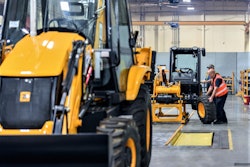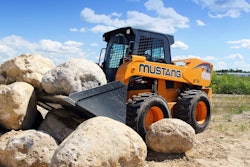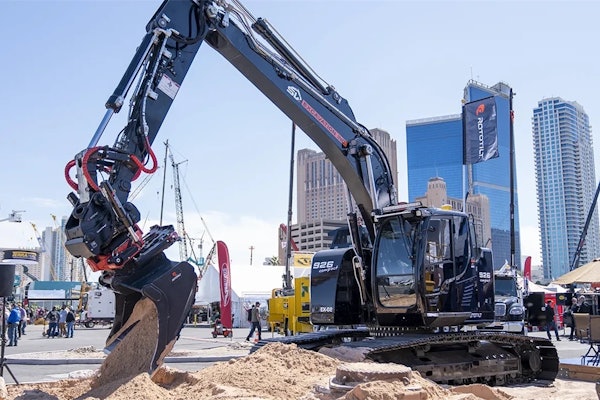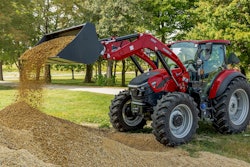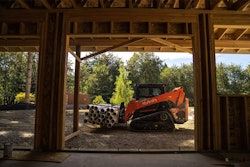Barko’s new B-Series trailer/truck-mounted loaders are easier to service
Barko says its new truck/trailer-mounted B Series merchandising loaders are easier to service and offer better durability and protection for wiring.
The new 295B, 495B and 595B are powered by a 173-horsepower Cummins Tier 4 Final engine. Max lift capacities are 22,820 pounds on the 295B, 28,720 pounds on the 495B and 38,820 pounds on the 595B. Standard boom length is 30 feet on the 295B and 32 feet for both the 495B and 595B.
For easier maintenance, Barko has relocated the fuel filters, made access to the electrical easier and has redone the routing of wires to provide better protection. The company has also boosted durability of the hydraulic cylinder with a new design.
To read more, click here.
Lifting Roundup: 10 attachments for grabbing, hoisting, working at heights
From vacuum-powered lifts to platforms with easier access, these 10 attachments for loaders and telehandlers are designed for grabbing, hoisting or working at lofty heights.
To see the attachment roundup, click here.
Fire brings Ford F-150 production & some Super Duty to a halt; GM, FCA also impacted
Production on most of Ford’s F-Series trucks has been suspended following a major fire at a Michigan parts supplier that deals with several OEMs.
However, despite the temporary shutdown, Ford told reporters during a press conference call that its truck inventory is large enough that sales will not be affected by last week’s blaze at Meridian Magnesium Products of America’s plant in Eaton Rapids, Michigan.
To read more, click here.
Doosan intros steel-track DX225MH-5 material handler
Unveiled at the same media event as the new DA30-5 articulated dump truck was a new Doosan material handler with a steel track undercarriage.
The DX225MH-5 material handler is factory fitted with cab risers for increased visibility. Four-foot risers are standard, six-foot optional. The material handler’s straight boom improves reach and lift height for better material placement. Droop nose arms provide enhanced grapple and magnet access into containers, trucks and railcars. Dual-boom cylinders and under-mount arm cylinder placement provide the heavy lifting capacity.
To read more, click here.
Doosan unveils updated DA30-5 artic with new adjustable suspension, improved cab alongside improved telematics platform
Doosan unveiled new iron, telematics technology and a new sponsorship in a press event Tuesday in New York City.
New York City you say? Well, if you happen to see the 122-year-old Korean company’s logo on a banner in Yankee Stadium this summer, that will explain the press conference venue. But there was a new articulated dump truck and a beefed-up telematics platform to talk about as well.
The upgraded 30-ton articulated truck, the DA30-5 features a new front suspension and rear tandems similar to the company’s DA40 artic. The hydro-gas, self-leveling front suspension brings greater driving comfort and smoothness, especially when the bed is empty.
The hydro-gas cylinders are connected to pressure accumulators and replace the earlier versions’ shock absorbers and rubber springs. The front suspension is also self-leveling, and the driver can change the ride characteristics of the truck by adjusting the pressure. In the long run, the adjustable suspension and smoother ride is more advantageous to productivity, says Aaron Kleingartner, marketing manager.
Doosan also improved the capabilities of its unique rear tandem/single rear axle/tandem bogie drive system by bringing the design and manufacture in-house rather than off-the-shelf. Instead of six brake systems the new tandem only has four, which reduces maintenance. The new design also uses a common oil in the tandems and rear differential to make inventory and service intervals less complex.
To read more, click here.




